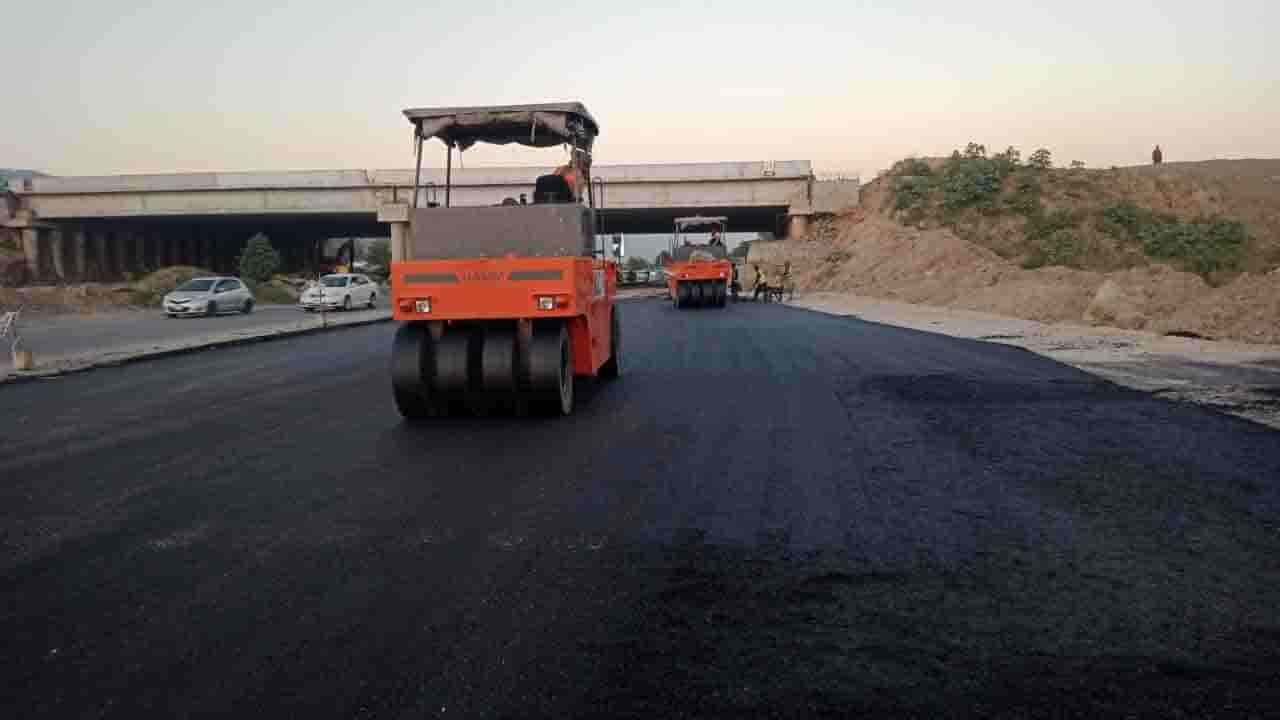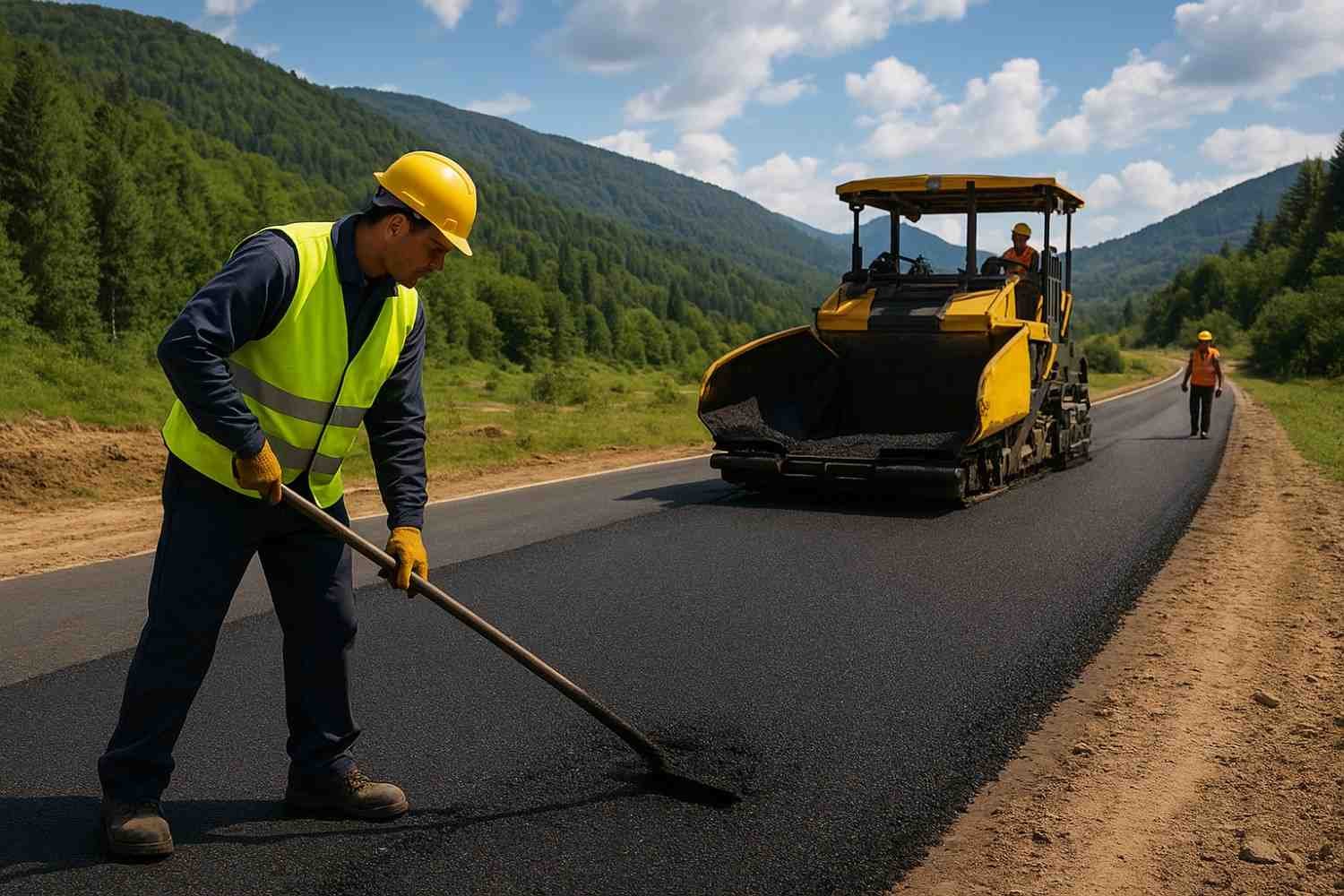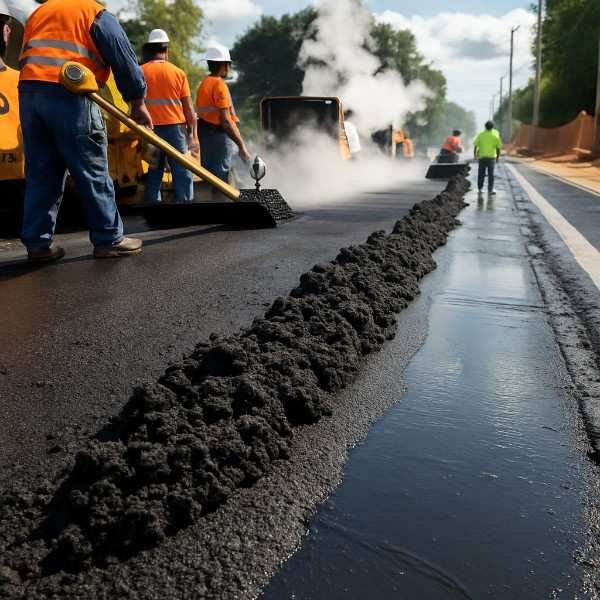Table of Contents
Introduction
Asphaltic flexible pavement is a common type of road surface layer construction used broadly in the world. Flexible pavement is composed of a bituminous material surface course and underlying base and subbase courses. Flexible pavement materials consist of aggregates such as crushed stone, gravel, and sand bound together using bitumen, a viscous petroleum-based binder that enhances cohesion, waterproofing, and flexibility within the pavement structure. The combination of aggregates and bitumen allows for efficient construction, durability, and adaptability to different soil types and climates, making flexible pavement a versatile choice for road infrastructure projects.

Base Surface Preparation
Before laying the asphaltic base or wearing course, preparation of the base surface is very important to achieve the desired result. Therefore, the following procedure should be adopted:
1. Prime Coat
Prime Coat: It is the application of a low viscosity liquid asphalt product to an absorbent surface. It is used to prepare an untreated base for an asphalt surface. The Prime penetrates into the base and plugs the voids, hardens the top, and helps bind it to the overlying asphalt course. It is to be applied on Aggregate Base Course as well as WBM Base Course.
Prime Coat execution procedure:
- Prime coat shall be applied when the surface is dry & broomed.
- The surface may be reasonably moist when emulsified asphalt is used.
- The application is prohibited when the weather is foggy or rainy or when the atmospheric temperature is below 15°C.
- Primed surface shall be kept undisturbed for at least 24 hours, so that bituminous material travels beneath and leaves the top surface in a non-tacky condition.
- The liquid asphaltic material shall be sprayed by means of a pressure distributor of approved capacity @ 1.0 kg / sqm on WBM Base Course and Aggregate Base Course.
- Prime coated surface shall not be opened to traffic until it has penetrated and cured sufficiently.

2. Tack Coat
Tack Coat: It is a light application of asphalt, usually asphalt emulsion diluted with water. It is used to ensure bond between the surface being paved and the overlying course. It is to be applied on Asphaltic Base Course and on concrete surface.
Tack Coat execution procedure:
- The Tack Coat shall be applied only when the surface treated by power brooms and/or blowers is dry, free from loose material dirt or any other objectionable matter.
- However, for emulsified asphalt, application may be made on a reasonably moist surface.
- Application of Tack Coat should be avoided in fog or rain.
- Tack Coat shall be sprayed by means of a pressure distributor as given in the table.
- Equipment of a recognized manufacturer for spraying of Tack Coat shall be a pressure distributor of not less than 1000 lit capacity mounted on pneumatic tyres.
- A hand power spray attachment to a bitumen pressure distributor or other container along with allied accessories shall be furnished.

3. Seal Coat
Seal Coat: It is a thin asphalt surface treatment used to waterproof and improve the texture of an Asphalt Wearing surface. Depending on the purpose, Seal Coat may or may not be covered with aggregate. The main types of seal coats are aggregate seals, fog seals, emulsion slurry seals, and sand seals.
Seal Coat execution procedure:
- Generally, the premix carpets may not require Seal Coat. However, in certain conditions, due to special considerations or technical reasons, the finished surface may require a Seal Coat. In case the Seal Coat is technically required, it shall be clearly specified and shown on the drawings by the designer. The work may only be undertaken after approval by the respective DW&CE.
- If not specified differently by the designer, the Seal Coat shall consist of spraying heated bitumen @10 Kg, followed by the uniform sprinkling of sand @ 0.10 Cum per 10 Sqm.

Asphaltic Base Course (Plant Mix)
The requirements cover Coarse Aggregate, Fine Aggregate, Filler, and Bituminous material. Material requirements of the Asphaltic Base Course layer are given in the tables:



a) Filler
When the combined grading of the Coarse & Fine aggregate is deficient in material passing Sieve # 200, additional Filler material shall be added which will conform to the table given below:

b) Asphaltic Material
Asphaltic binder to be mixed with the aggregate to Asphaltic base shall be AC having penetration grade 40/50, 60/70, or 80/100 as specified and shall meet the AASHTO M-20 requirements, provided in the table given below:

c) Marshall Test Criteria
The table given below shows the limits for Asphaltic Base Course (Plant-Mix) material.

d) Job Mix Formula (JMF) for Asphaltic Base Course (Plant-Mix)
JMF should be established at least one week prior to production, JMF shall be established by the Marshall Method of Mix Design according to the Asphalt Institute Manual series # 2 (MS-2), latest revision or as specified by the designer.
- JMF, with the allowable tolerance, shall be within the range specified as above.
- The ratio of the weight of Filler (passing Sieve # 200) to that of Asphalt shall range from 1 to 1.5, for areas where temperatures exceed 40° C.
- The following Specimen JMF for Asphaltic Base Course, applicable to MES Schedule Item 02-82, has been given for estimation purposes. In case a different mix formula is used, the rate shall be adjusted by deducting the cost of materials in the above formula and adding the material cost incorporated in the new JMF at “Material Supplied Only” rates given in Section-27 of this Schedule of Rates.
- i) Bitumen Grade 60 / 70: 4.00%
- ii) Khaka (Stone dust): 24.00%
- iii) Aggregate 1/2”: 29.00%
- iv) Aggregate 3/4”: 24.00%
- v) Aggregate 1-1/2”: 19.00%
- Density of Asphaltic Base Course be 2.24 T/ Cum.
e) Max Variation in Material from JMF
Variation in Passing %age of materials as given below is allowed with respect to the gradation adopted for JMF.
- For Mineral Aggregates
- i) Retained No. 4 and larger: ± 7%
- ii) Passing No. 4 to No. 10 sieve: ± 4%
- iii) Passing No. 10 to No. 30 sieve: ± 4%
- iv) Passing No. 30 to No. 200 sieve: ± 3%
- Asphalt Content
- i) ± 0.3% (by total dry weight of mix)
Construction Requirements
Construction Requirements of laying Asphaltic Base Course layer is as under:


Note:
- Hot asphaltic mixtures shall be placed only when the air temperature is 4oC or above. No. asphalt shall be laid under foggy or rainy weather or over moist surface.
- When thickness is deficient by more than 5 mm, it shall be made up by Asphaltic Base Course / Wearing Course material, of reasonable thickness as approved by Engineer-in- Charge, without extra cost to the employer.






